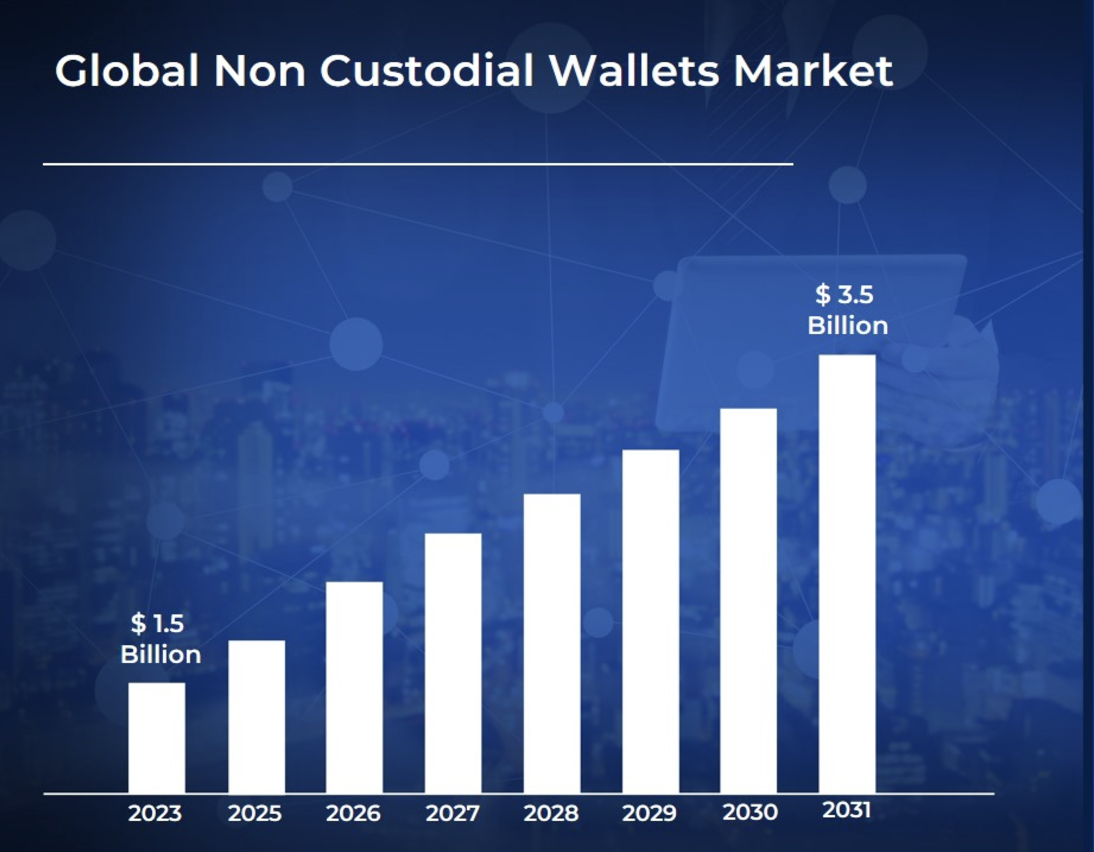Self-custody wallets give crypto users what centralization never could, sovereignty. They allow people to own their digital assets without relying on intermediaries. But governments are starting to push back.
Regulations targeting these wallets are becoming more common, with Brazil’s recent move to restrict stablecoin transfers to self-custody wallets being a prime example.
Why Does Self-Custody Matter?
This battle raises important questions. Can self-custody wallets survive under a dilating regulatory eye? Or will institutional influence push users to rely on centralized systems?
Self-custody wallets let users hold their cryptocurrency directly. Unlike custodial wallets, which rely on third-party platforms, self-custody gives users full control. This setup protects against risks like exchange failures, as seen in the FTX collapse.
These wallets are central to crypto’s ethos of decentralization. They let users transact without intermediaries, offering privacy and the highest degree of financial freedom.
“Self-custody wallets are a key component to enhancing a user’s financial sovereignty, privacy, and security,” Hester Bruikman, Staff Product Manager for MetaMask at ConsenSys, told BeInCrypto in an interview.
Custodial wallets, on the other hand, come with counterparty risks. If the provider fails or is hacked, users may lose access to their funds. Self-custody eliminates this risk entirely, helping users to keep their assets safe.
Despite their benefits, these wallets have faced criticism for being complicated and risky. Recent innovations aim to change that, with smart contract accounts (SCAs) leading the charge. SCAs remove the need for a single key, replacing it with flexible recovery methods like passkeys and multi-party computation.
“Enhanced security models, leveraging machine learning and on-chain insights, now make it easier to protect users before they take an action,” said Bruikman.
These advancements reduce risks, allowing people to explore new Web3 applications in a safer way.
Other upgrades include gas fee abstraction, which lets users pay transaction fees in any token, and session keys that facilitate approvals for multiple actions. Embedded wallets are also making it easier for new users to manage their crypto directly within applications.
Regulatory Challenges Facing Self-Custody Wallets
Looking at the regulatory big picture, governments are tightening the rules around self-custody. Brazil’s Central Bank recently proposed regulations to block stablecoin transfers to self-custody wallets. Their goal? Align crypto with traditional finance while the national currency hits all-time lows against USD.
“The fact is that 70% of Brazil’s crypto transactions are in stablecoins, a clear sign that Brazilians are turning to USD-backed assets to escape the weakening real! Now they want to force funds to stay in centralized exchanges, giving them full control over your money. Brazilians deserve financial freedom, not more surveillance,” said one crypto influencer.
In Europe, the Markets in Crypto-Assets (MiCA) framework is setting new standards. Transfers over $1,050 involving self-hosted wallets must follow stricter anti-money laundering rules undergoing “customer due diligence” checks. These regulations aim to combat financial crime but may limit the use of these wallets.
Hester Bruikman notes that regulatory pressure has already slowed innovation, particularly in the US.
“Regulatory hostility…has had a meaningfully negative impact on innovation in the space among US-based technologists,” she said.
In September, the US Treasury officially withdrew a 2020 proposal by FinCEN, which would have imposed stringent regulations on these wallets. The rule sought to ban peer-to-peer digital asset transactions, DeFi activities, certain NFT platforms, and other decentralized operations. It also would have required users of self-custodial wallets to collect and report detailed counterparty information for every transaction they conducted.
The push for oversight is clashing with the crypto community’s desire for decentralization. The challenge is finding a balance that protects users while yielding growth.
Self-custody wallets are about more than just control; they represent financial sovereignty. They let users operate outside traditional systems, making them especially valuable in regions with unstable economies like Brazil.
Privacy is another key benefit. With this kind of wallet, users avoid the data collection practices of centralized providers. This is critical as financial privacy becomes harder to protect in a digital world.
Self-custody wallets also empower users in peer-to-peer ecosystems. From gaming to DeFi, these wallets allow direct participation without intermediaries.
“For as long as centralized options come with the same issues of traditional intermediaries, there will continue to be a desire for self-custodial alternatives,” Bruikman said.
The Future of Self-Custody Wallets
The road ahead is both challenging and promising. Innovations like SCAs are making these tools safer and easier to use. Wider adoption is likely by 2025 as more people adopt financial independence.
Market trends also indicate growth. MetaMask, the leading non-custodial wallet, saw a 55% increase in monthly active users over four months, going from 19 million in September to 30 million in January. The market for self-custodial wallets is estimated to reach $3.5 billion by 2031, growing at a CAGR of 8% from 2024 to 2031.

However, regulatory challenges remain. Governments will continue to push for oversight, and the crypto community must adapt. Hybrid models that blend autonomy with compliance could offer a path forward.
The importance of self-custody wallets is clear. They protect user sovereignty, foster innovation, and uphold the principles of decentralization. The task now is to ensure these values endure in an increasingly regulated world.
Self-custody is at the heart of crypto’s promise of decentralization and financial freedom. But it’s under threat. Regulations like Brazil’s stablecoin restrictions show how governments are reshaping the industry.
The future of self-custody lies in innovation and adaptability. With tools like SCAs and gas fee abstraction, these wallets are becoming more user-friendly and secure. The crypto community must continue to push for solutions that balance oversight with the autonomy users demand.
In this battle for control, self-custody wallets represent a critical choice: Who holds your crypto, an intermediary or you?
 beincrypto.com
beincrypto.com
